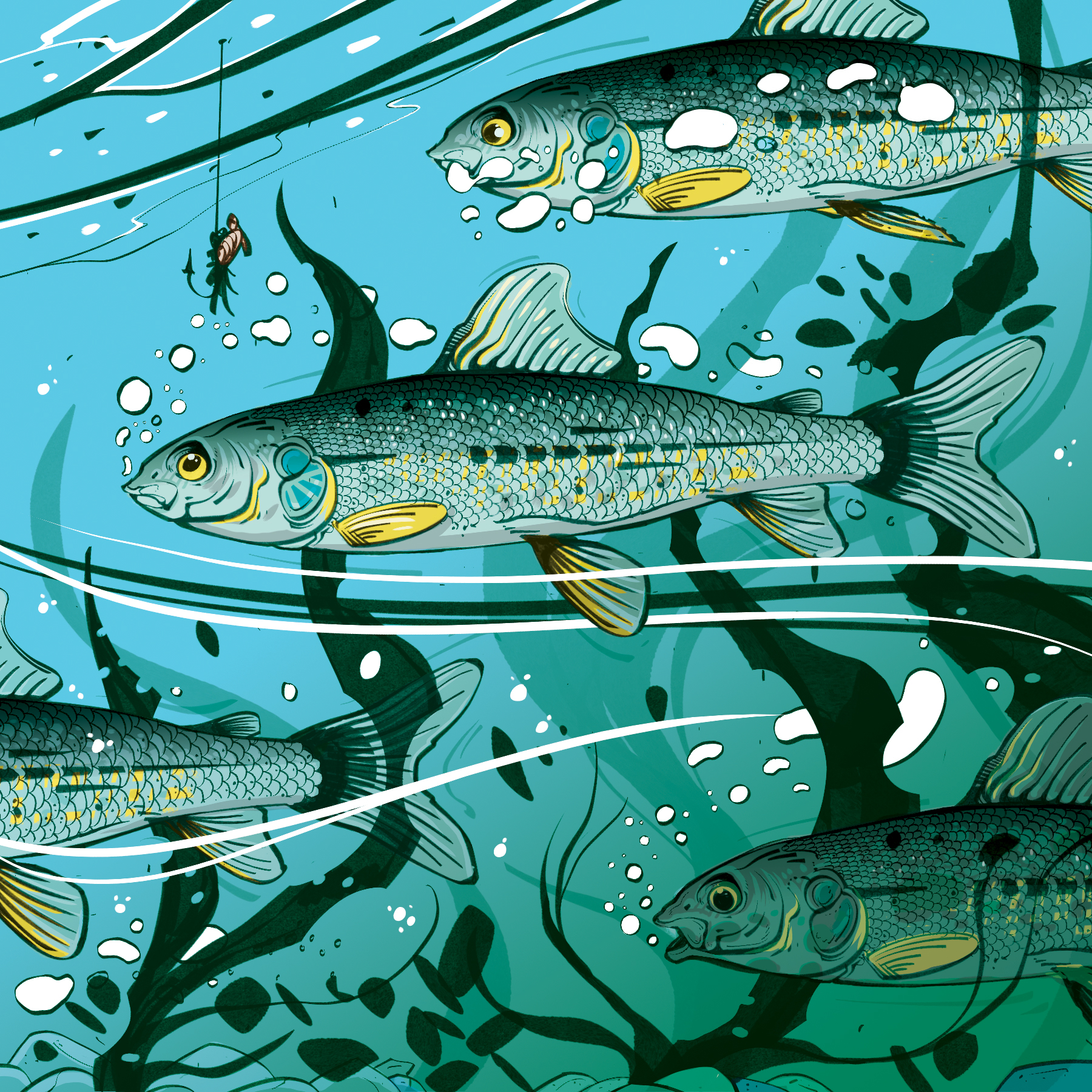In the streams and rivers through much of BC, there is a feisty little game fish that can be abundant in the right habitat, sometimes challenging to catch, and tasty when prepared right. However, even with these attributes, mountain whitefish (Prosopium williamsi) are often ignored by BC anglers. For one thing, these fish are not salmon or trout, and for many anglers, that is enough. But other tarnishes to their image include feeding on the bottom after mucking about in the substrate to stir up food, eating the eggs of salmon and trout, and occasionally eating juvenile trout too.
Advertisement

Mountain whitefish look like they could belong in the minnow or carp family of fish (Cyprinidae), but in fact, they belong in the Salmonidae family, along with salmon and trout. Mountain whitefish are slender, cylindrical fish, silvery, with an olive green back and a deeply forked tail. Halfway between the dorsal fin and the tail is the adipose fin, characteristic of all salmonids. They have a short head, with their small, downward-facing mouth located under a bit of a snout. In the cold water of BC rivers, a whitefish typically grows to 500 to 1,000 grams (.5 to one kilogram), but the world record from the Bow River in Alberta is 2.49 kilograms (5.5 pounds). These fish can live 15 years.
Mountain whitefish have a huge range in western North America, from the Mackenzie River to the Colorado River. They are found throughout BC, absent only from coastal islands (including Vancouver Island) and the far northwest corner of the province. They prefer clean, cold mountain streams and rivers with a mix of pools and riffles.
Advertisement
Mountain whitefish are sexually mature at three years and will often school together during the spawning season in late fall or early winter. Spawning habitat is shallow gravel bars in the main river or the lower parts of tributary streams. Depending on her size, a female whitefish will produce between 2,000 and 5,000 eggs that incubate in the gravel through winter to hatch in March.
Through most of the year, mountain whitefish feed primarily on aquatic insects and other invertebrates that they uncover by fanning the river bottom gravel with their fins and tails. In fall and winter, in areas where salmon spawn, salmon eggs are a significant food item. Larger mountain whitefish will sometimes prey on juvenile salmon and trout. In turn, though, young whitefish are on the menu for river-dwelling trout and char.
Advertisement
Actual competition for food between mountain whitefish and trout in the same stream is limited by their respective feeding strategies. Trout feed mainly on invertebrates that drift by in the current, while whitefish are primarily bottom feeders. This is a successful strategy though; some estimates have mountain whitefish outnumbering trout about 100 to one in rivers.
In spite of their poor image, there are some anglers who pursue mountain whitefish, and there is plenty to like. These fish feed actively through the winter, and they can provide a welcome winter recreation. They tend to gather in schools in deep pools in the river, often just below a long riffle. Once such a school is located, the fishing can be hot. Some will be caught simply by casting a small spinner or nymph fly and letting it drift over the school, but getting the lure down near the bottom will increase the catch rate significantly. Fly fishers need a sinking line and spin fishers need weight of some kind. Of course, this also increases the risk of hang-ups. I talked to one fisher who uses a forked-shaped wire weight made from a coat hanger, claiming that this setup gets the lure to the whitefish, but seldom snags on the bottom. These fish can be caught throughout the day, but fishing is best in late afternoon and evening. In most of BC, the catch limit for whitefish is generous, currently 15 per day, but check the regulations before you head out for restrictions on specific rivers, such as a bait ban.
The firm, white flesh of mountain whitefish is not much different from that of a similar-sized trout. There are numerous recipes online for frying, smoking or grilling these fish. So, anglers who, in the past, have scorned mountain whitefish as poor sport or poor eating may be pleasantly surprised, particularly when trout are scarce or uncooperative.